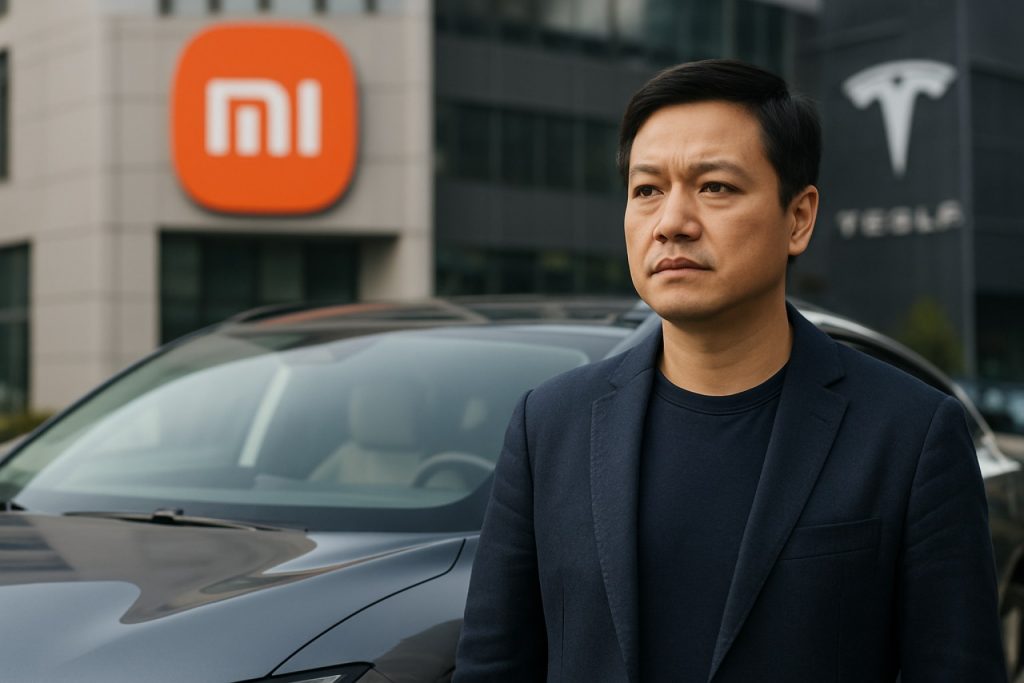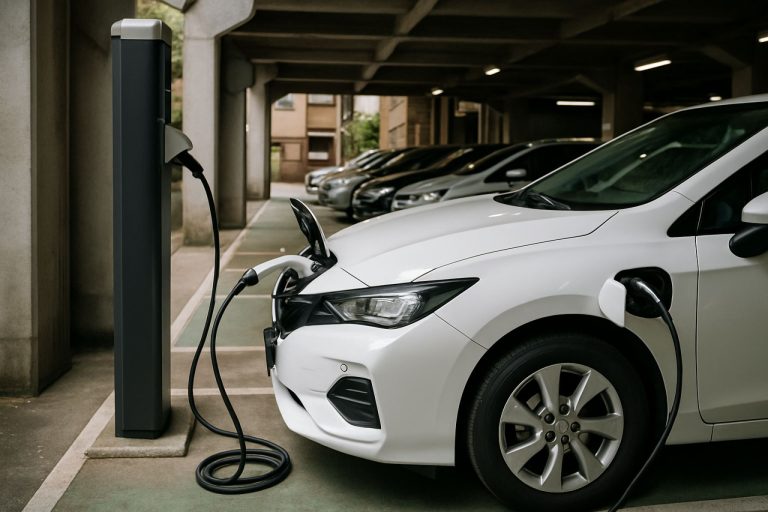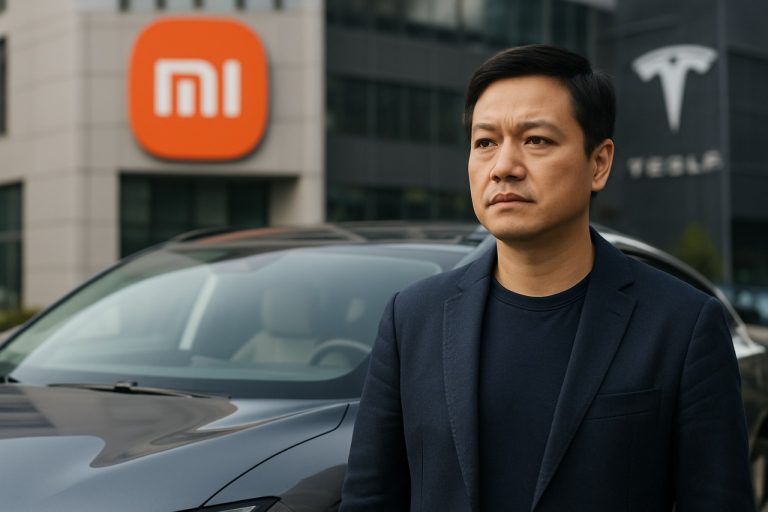
- Xiaomi is rapidly expanding from smartphones and smart home devices into the electric vehicle (EV) industry, marked by the strong debut of its all-electric SU7 sedan.
- First-quarter sales reached 18.1 billion yuan, with over 75,000 SU7 vehicles sold, yet overall revenue growth slowed to 11%.
- The company faces challenges meeting its ambitious 2025 goal of 350,000 car deliveries and aims to boost momentum with the upcoming YU7 SUV launch in July.
- EVs now make up 17% of Xiaomi’s group revenue but the segment remains unprofitable, recording a 61 million euro operating loss for the quarter.
- Affordability and advanced features drive demand, but safety concerns—especially brake failures and a high-profile accident—threaten customer trust.
- Xiaomi’s aggressive network expansion highlights its intent to compete with established Chinese EV giants in the evolving mobility market.
Not so long ago, sleek smartphones and smart gadgets were Xiaomi’s ticket to tech stardom. Today, engines rumble in the background, signalling the company’s relentless quest to conquer a world that once belonged to gasoline and exhaust: electric vehicles.
Stacks of ambition power Xiaomi’s vision. The first quarter hammered out sales of 18.1 billion yuan—just over 2.2 billion euros—on the back of its all-electric SU7 sedan. More than 75,000 SU7s found new homes from January to March—an energetic leap over last year’s Q4. Yet despite this clout, growth is slowing: the dizzying pace of previous quarters tamed to a more measured 11% increase. For Xiaomi, it marks a moment both of pride and pressure.
The road gets steeper from here. The company set itself an audacious 2025 target—delivering 350,000 electric cars. Its Q1 result, promising but trailing the ambitious average, leaves Xiaomi with mountain miles to climb. Their next gambit: the YU7 SUV, set to debut across China in July, hoping to fan demand across a market hungry for SUVs but skeptical after recent safety concerns.
Behind every illuminated badge lies a story—and for Xiaomi, it is the story of transformation and tension. The company, which generates the lion’s share of revenue from smartphones and AI-powered home devices, has poured billions into EV development. Out of 111 billion yuan in quarterly group revenue, electric vehicles and related innovation units account for 17 percent. That segment, now restructured to fold in AI, posted a combined gross margin of over 23 percent. Impressive, but there’s a catch: an operating loss (to the tune of about 61 million euros) suggests that profitability is still a shimmering goal on the horizon.
Price is power in Xiaomi’s pitch. The average SU7 fetches just under 30,000 euros—a figure that stings rivals, yet worry shadows this sweet spot. Reports swirled on Chinese social media of troubling brake failures, some linked to the SU7’s robust electric drive. A high-profile accident involving the semi-autonomous driving system fueled jitters, prompting whispers that Xiaomi quietly nudged back its much-anticipated SUV launch.
Word travels fast across China’s EV scene, and Xiaomi now faces a double challenge: maintaining its bravura in tech while earning the trust that gets cautious families into the driver’s seat. The company’s response? A rapid rollout: 235 dealerships across 65 cities, and a promise to keep refining features, from intelligent navigation to next-gen connectivity.
The bigger picture is clear. China remains ground zero for the world’s electric car revolution, a crucible where incumbents—think BYD and Nio—duel with upstarts for pole position. Still, few bets are as bold as Xiaomi’s, or as closely watched. Every delivery, every new model, every stumble, tests whether a master of pocket technology can scale up to highway speed.
Takeaway: Xiaomi’s leap into electric vehicles is rewriting the rules for tech brands hoping to electrify the world. But as the SU7 sedan burns rubber, the company will need as much grit as gadgetry—balancing speed with safety, innovation with reliability. The stakes: nothing less than a front-row seat in China’s race for the future of mobility.
You Won’t Believe Xiaomi’s Next Big Move: From Smartphones to Dominating the Electric Car Industry!
# Xiaomi’s Ambitious Drive: Electric Cars, Tech Innovation, and Challenges Unveiled
Xiaomi, long recognized for its affordable yet feature-packed smartphones and smart home gadgets, is now accelerating its play in the electric vehicle (EV) space. With the successful launch of its SU7 sedan and a bold push into the SUV market, Xiaomi is vying for the top spot in China’s hyper-competitive EV sector. Here’s what the source article only hinted at — plus critical insights, actionable tips, and answers to your biggest questions about Xiaomi’s automotive revolution.
—
1. Extra Facts and Deeper Insights
Extreme Speed of EV Entry
– Fast Track to Market: Xiaomi announced its EV ambitions in March 2021 and delivered its first SU7 sedan in just over two years. By comparison, most automakers spend 3–5 years bringing a new vehicle to market (Nikkei Asia).
– R&D Investment: Xiaomi’s investment in EV R&D exceeds $10 billion (Reuters), one of the largest by a Chinese tech firm entering the sector.
– Strategic Partners: The SU7 is produced at a Beijing plant operated by Beijing Automotive Group (BAIC), enabling scale and efficiency at launch.
– EV Design Legacy: The SU7’s design team includes ex-BMW iX programmer Li Tianyuan, leveraging luxury EV know-how.
AI and Connectivity Edge
– Smart Car Integration: The SU7’s infotainment system runs on Xiaomi’s HyperOS, providing seamless connectivity with Xiaomi phones, wearables, and smart home devices. This places Xiaomi at an advantage over traditional automakers.
– AI-Driven Features: The vehicle uses advanced algorithms for battery management, navigation, and semi-autonomous driving—consistent with the company’s prowess in artificial intelligence.
Market and Consumer Trends
– China’s EV Boom: China accounts for over 60% of global EV sales (International Energy Agency), drawing aggressive investment from both legacy brands and upstarts like Xiaomi.
– SUV Demand Surges: SUVs are the hottest segment in China, making Xiaomi’s timing for its YU7 SUV debut especially strategic.
—
2. Pressing Questions Answered
How does the SU7 stack up against competitors like BYD, Nio, or Tesla?
Xiaomi SU7 Pros:
– Lower price than most competitors, starting at RMB 215,900 (~€27,500).
– Superior connectivity and ecosystem with Xiaomi devices.
– High-end cabin tech, including “Xiaomi Pilot” driver assistance (comparable to Nio Pilot, Tesla Autopilot).
Cons:
– Unproven track record in automotive safety or long-term durability.
– Concerns over brake failures and semi-autonomous driving reliability.
– Fewer supercharging stations compared to established brands.
Is Xiaomi’s EV business profitable?
Not yet. Despite a 23% segment gross margin (significantly higher than legacy automakers, whose gross margins average 10–15%), heavy R&D and marketing costs mean Xiaomi posted an operating loss of €61 million for the quarter. Profitability will depend on scaling and cost controls.
How does Xiaomi address EV safety and recent controversies?
Following high-profile brake failure claims and an accident involving Xiaomi’s semi-autonomous driving, the company pledged over-the-air (OTA) updates to rapidly improve safety features. There are reports of rigorous third-party safety audits and plans for a national safety demonstration program.
—
3. Features, Specs & Pricing Snapshot
| Model | Starting Price | 0–100 km/h | Range (CLTC) | Key Features |
|—————|——————|————|————–|—————————–|
| Xiaomi SU7 | ~€27,500 | 5.3 sec | up to 800 km | HyperOS, Level 2+ ADAS |
| BYD Seal | ~€30,000 | 5.9 sec | up to 700 km | DiLink OS, L2 ADAS |
| Tesla Model 3 | ~€34,000 | 6.1 sec | up to 713 km | Tesla OS, Autopilot |
Visit the official Xiaomi website: Xiaomi
—
4. Real-World Use Cases and Life Hacks
– Intelligent Ecosystem: Use your Xiaomi phone or smart speaker to pre-cool the car or check the battery level remotely.
– Navigation Shortcut: SU7’s HyperOS can sync your calendar and autonomously plot routes for meetings — saving commute time.
– “Xiaomi Pilot” How-To Steps:
1. Enable driver-assist mode via the center console.
2. Set following distance and lane preferences.
3. Pay attention to driver prompts—a legal requirement for semi-autonomous features in China.
—
5. Market Forecasts & Industry Trends
– Tech Giants in Cars: Xiaomi joins Apple and Huawei in pivoting from gadgets to EVs. Analysts expect more device makers to follow as vehicles become “smartphones on wheels” (McKinsey).
– EV Price Wars: Intense competition and government subsidies in China are driving EV prices down, making advanced electric cars more accessible.
– Expansion Abroad: Xiaomi aims to enter global markets (Europe, Southeast Asia) as Chinese EVs gain recognition for value and innovation.
—
6. Controversies, Limitations & Security
– Safety Record: SU7’s recent incidents raise questions. Xiaomi responds with faster OTA fixes, but it needs to build a reputation for reliability.
– Data Privacy: Like all connected vehicles, Xiaomi’s cars collect vast data. The company says compliance with Chinese data protection laws is a top priority, but international scrutiny is expected if it expands.
– Sustainability: Xiaomi claims green manufacturing, but independent third-party verification is pending.
—
7. Pros & Cons Overview
Pros:
– Affordable, feature-rich EVs.
– Seamless integration with the Xiaomi ecosystem.
– Fast dealer expansion for widespread support.
Cons:
– Newcomer status; lacks automotive legacy.
– Reliability/safety testing still ongoing.
– Limited charge network—especially outside major cities.
—
8. Quick Tips for Xiaomi EV Buyers
– Before purchasing, ask for full disclosure on recent safety patches and confirm OTA update schedules.
– Use the Xiaomi/Mi app to maximize connectivity features—set up automation for daily routines.
– Request a test drive of both the SU7 and rival vehicles (BYD Seal, Tesla Model 3) to compare driving experience and in-cabin tech.
– Stay updated on recall or safety bulletins via Xiaomi’s official channels.
—
9. Actionable Recommendations
– For Early Adopters: Leverage Xiaomi’s promotional pricing and integrated tech features, but closely monitor post-purchase support.
– For Safety-Conscious Drivers: Wait for additional crash-test data and real-world reliability results.
– For Investors: Watch Xiaomi’s global ambitions and whether its EV unit can cross the profitability threshold in the next 12–18 months.
—
Final Word
Xiaomi’s electric car push is turbocharging the race between tech and traditional automakers. With its unique blend of affordability, smart features, and rapid innovation, it’s challenging industry norms—but must overcome questions around safety, scale, and trust.
Stay informed, test thoroughly, and take advantage of cross-device ecosystems to get the most from Xiaomi’s EV breakthrough.
Find out more about Xiaomi’s devices and innovation at Xiaomi.



